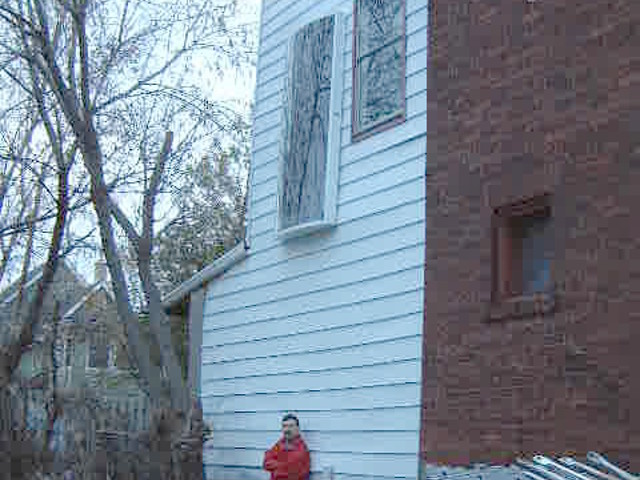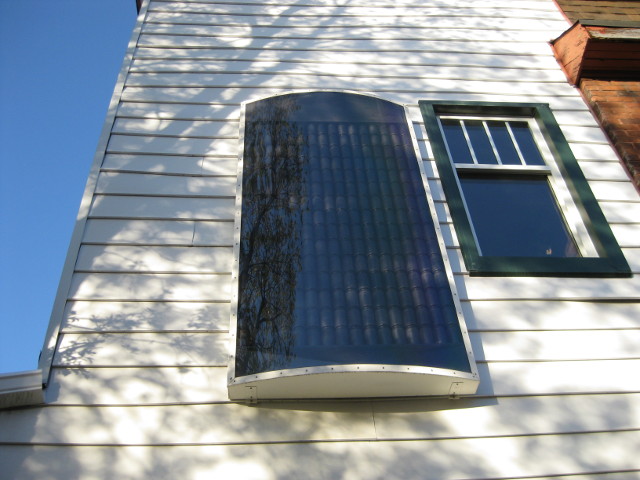Cansolair installation in Ottawa
I installed a Cansolair solar air heater for a customer on a house in Ottawa, Ontario, Canada. This was done working with Isolara Energy Services. Note that Cansolair is often misspelt Cansolar.
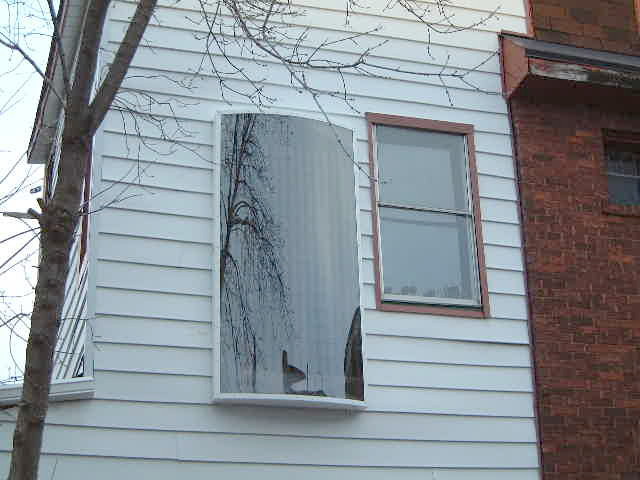
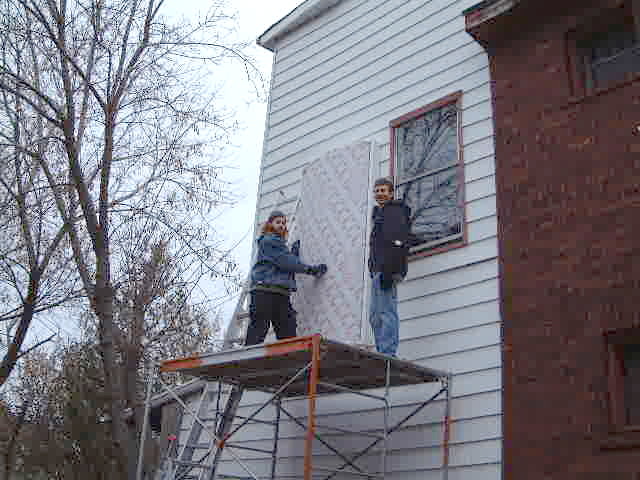
The collection of photos below show what's seen from indoors. At the bottom of the wall is a box containing the blower, thermostat and electronics for turning the blower on and off according to the thermostat and the snap disc sensor inside the Cansolair. The blower sucks the room-temperature, indoor air into the Cansolair panel and the at the top of the wall is where the hot air returns from the panel back into the room.
If the snap disc sensor inside the Cansolair determines the air outside is cold then it will not turn on the blower. To prevent cold air from reentering the room, the backdraft damper at the top of the wall is automatically closed due to gravity while the blower is not on. And if any cold air tries to flow in from the Cansolair at the bottom then that backdraft damper will be closed by that reverse air flow.
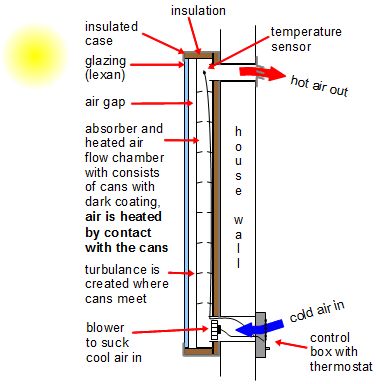
According to Cansolair's website, they use LexanTM, for their glazing. Lexan is a polycarbonate and resin material that is very strong and flexible. Rather than being flat, the glazing on the Cansolair is rounded so that it wraps around the unit a bit, catching the sun for more hours of the day. You can see this roundness in the pictures above.
Another interesting feature of the Cansolair is that they make the air flow inside the air flow chamber in a turbulent manner. Instead of being nice straight flowing air, the air actually spirals or vortexes. The reason for this is to make ALL of the air contact the surface of the air flow chamber as much as possible, thereby heating all of the air and making the air spend a longer time in the chamber. Cansolair is so named because the air flow chamber is made up of pop/soda cans stacked one on top of the other. Where one can sits on top of another, one of the cans has been cut such that it has vanes. So when the air passes from one can to the next in the stack, the vanes make the air vortex.
More details of the Cansolair design can be found by examining its Canadian patent number 2393273.
